 A Step By Step Guide To Identifying And Sealing Air Leaks Around Windows
A Step By Step Guide To Identifying And Sealing Air Leaks Around Windows
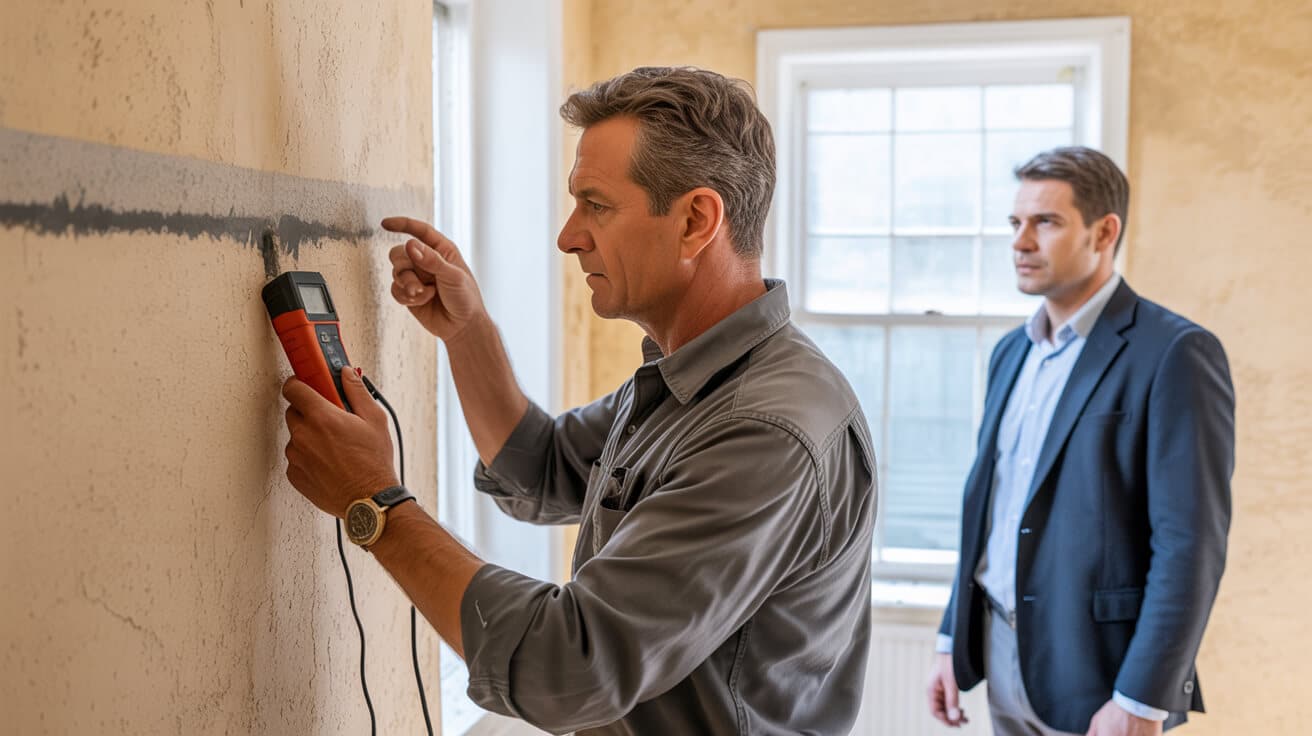
What Makes Air Leaks Around Windows a Hidden Threat to Your Property?
Air leaks around windows rarely announce themselves. No blaring alarm, no puddle—just a creeping erosion of warmth, quiet, and compliance that makes every bill sting a little more. For property owners, facilities managers, and asset supervisors, these silent gaps drain far more than just energy—they shrink comfort, spike costs, and dent your professional reputation for stewardship.
That chill by the window isn’t just about comfort—it’s bleeding right through your P&L.
The harsh reality: even new builds aren’t immune. Window gaps dodge routine checks, seasoning slow but steady hits to your EPC, insurance position, and tenant contentment. For commercial sites, that means unexpected line items; for block managers, it’s another headache in the complaints inbox. The UK’s relentless damp, coupled with evolving Building Regulations (especially Part L), puts air-leak control directly on your compliance radar. Ignore it, and you risk not just chilly rooms—but regulatory interventions, tenant disputes, and valuation drops.
Quick fact: Up to 20% of heat loss occurs through windows and doors (energysavingtrust.org.uk). Tack on associated issues—unexpected condensation, black mould, failed EPC assessments—and one sneaky little draught keeps escalating into a full-blown property management headache.
When you tackle these leaks upfront, you sidestep compliance embarrassments, preserve property value, and build trust with every stakeholder who steps across your threshold.
Which Warning Signs Reveal Your Windows Are Slowly Leaking Air?
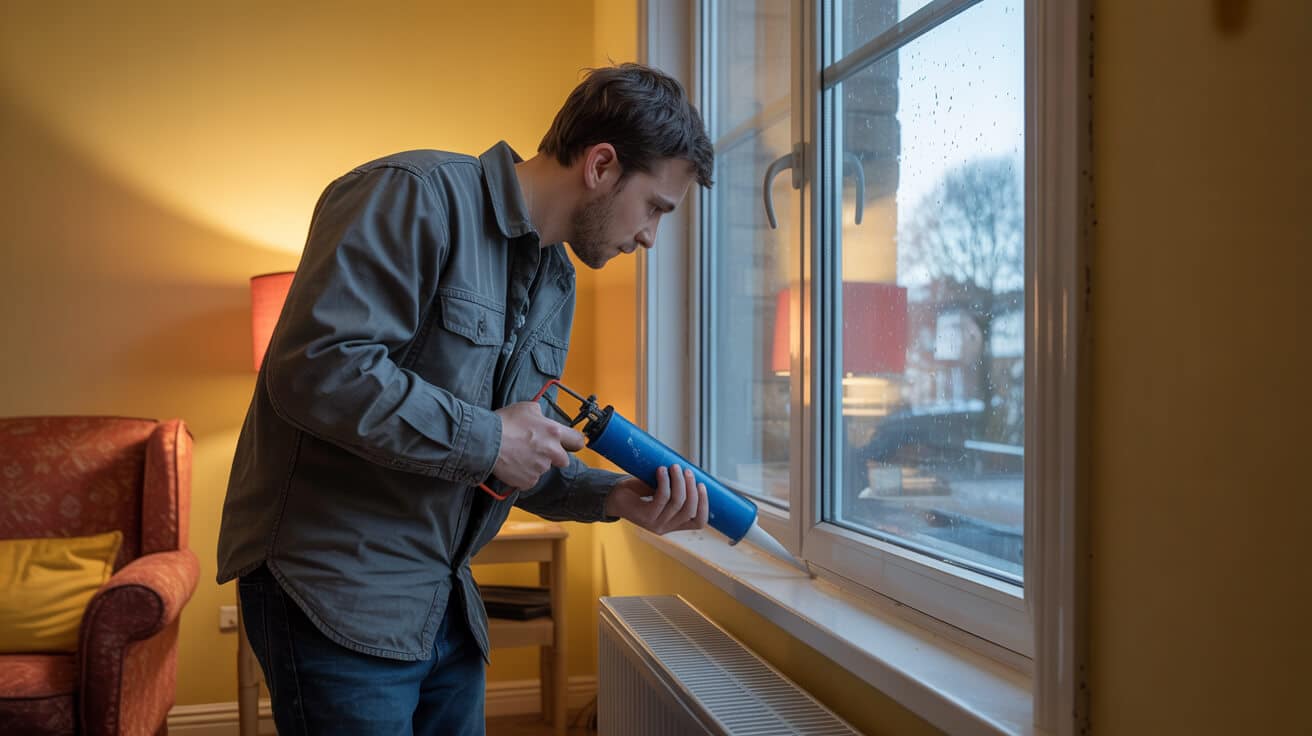
Silent leaks—by design—go unnoticed unless you look for the right clues in the right light. That’s why the most diligent owners run spot-checks, rain or shine, because the cost of “wait and see” is nearly always regret.
Most leaks won’t wave—they hide until your comfort, utility bills, or HSE check expose them.
Run down this list to catch air leaks before they become your next big expense:
- Crumbly or missing caulk: If the perimeter sealant has cracked or vanished, cold air (and damp) can slip through nightly.
- Daylight in the corners: Any shaft of sun through frame joints is an open door for draughts and moisture.
- Localised chill: On a cold day, let your palm hover around the frame—cool spots mean trouble.
- Condensation edge or water marks: Damp at window edges, especially after a storm, is a red flag for incomplete sealing.
- Spot mould or musty patch: Recurring dark specks or odours signal repeated moisture cycles, often after leaks go unchecked.
Don’t forget the moving parts: open and close each window fully. Wobbly frames, loose locks, or sticky sashes are classic culprits for sub-par airtightness.
Check both the inside (where caulk ages faster) and the exterior (often skipped by tenants). Weather magnifies all these faults—storm after storm, every ignored leak adds up.
Record findings right away. Even a basic photo log or marked-up floorplan saves time and arguments later. Thorough documentation makes warranty claims and compliance reports an order of magnitude easier.
How Do You Actually Test for Air Leaks Around Windows—Without Specialist Gear?
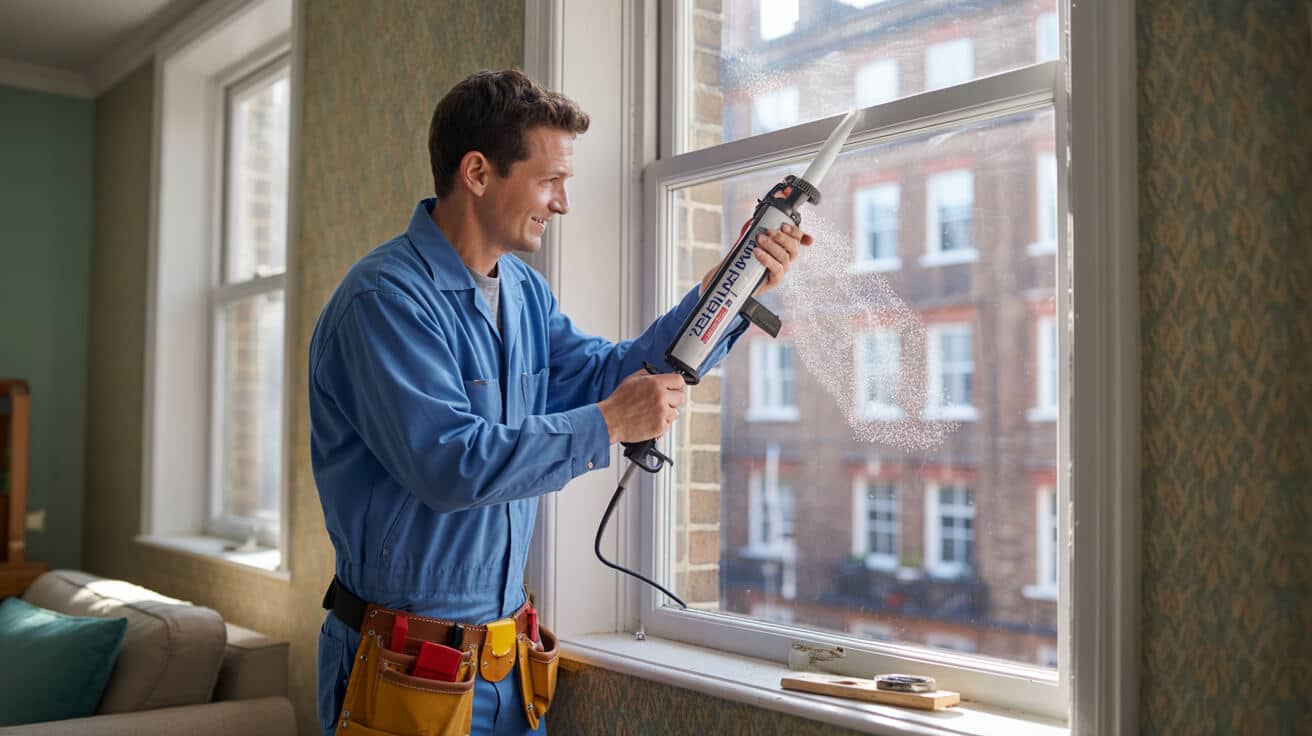
With energy bills and compliance at stake, don’t rely on guesswork. The good news: you don’t need thermal cameras or fancy gadgets—just focused attention and a few simple, proven techniques.
Five minutes with a sharp eye (and maybe a candle) beats hours of hope for the best.
Here’s your practical toolkit:
- Hand Sweep: On a cold or breezy day, circle your palm (damp works best) around every edge. Any hint of airflow means a leak.
- Smoke/Incense Test: Use incense or a slim candle (carefully). Watch for flickers as you trace windows; movement means a draught ([energy.gov](https://www.energy.gov/energysaver/detecting-air-leaks)).
- Paper Strip Test: Shut a piece of paper in the window. If it pulls out easily, the seal is poor ([clerawindows.com](https://www.clerawindows.com/blog/how-to-check-and-fix-draughty-windows)).
Extra pro tip: note the exact position of any detected leak—record it on a checklist or phone photo. This simple habit saves time, avoids “round 2” rework, and serves as compliance evidence for agents and insurers.
A quick caution: Never test with open flame near curtains, blinds, or historic finishes, and never leave a candle unattended.
What Tools and Materials Will Set You Up for Lasting Window Sealing Results?
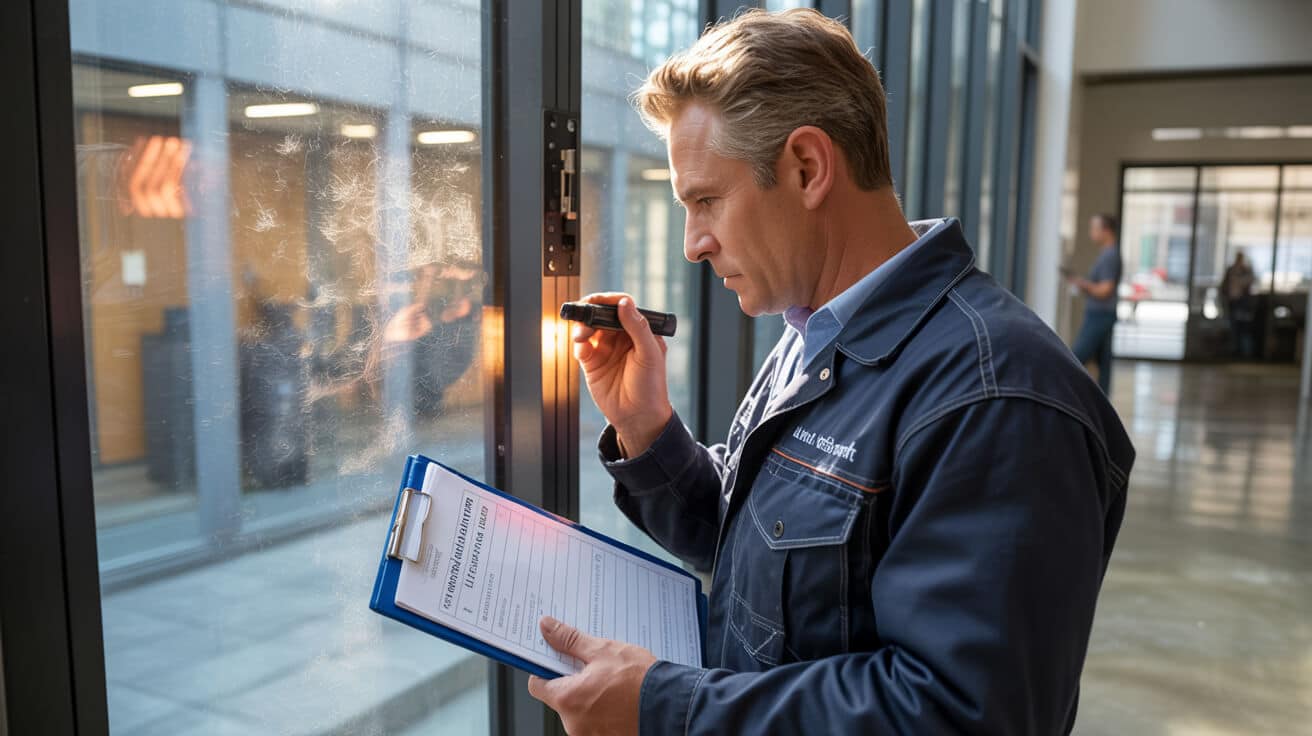
Great repairs start with preparation. Rushing your kit risks the whole job unravelling down the line—or worse, gets flagged in an audit. Build your toolkit for both effectiveness and compliance, because cutting corners today only multiplies headaches tomorrow.
The right tools now prevent patch up and pray later.
Your “no-regrets” window-sealing toolkit:
- Trade-grade sealant gun: and a weatherproof, flexible polymer or silicone caulk (outdoors: UV and rain-resistant; indoors: low-VOC, paintable).
- Weatherstripping tape: For moving sashes, self-adhesive foam or rubber—fit the gap, avoid over-thick strips.
- Scraper or stiff putty knife: Scrape old, flaky sealant to bare, solid frame.
- Cleaning gear: Microfibre cloth, small brush, or hoover—clean surfaces = strong adhesion.
- Safety kit: Gloves for scraping/cutting, goggles for paint or putty work, especially with historic frames.
For systematic repairs or professional audit trails, snap “before” and “after” shots—flawless documentation is your best backup when authorities come calling.
Fact: Repairs using trade-rated sealants are over 90% less likely to require a callback than those using generic products ([sashwise.co.uk](https://sashwise.co.uk/blogs/prepare-your-windows-for-winter/)).
Resist “that’ll do” thinking at this stage. Future you—and your compliance officer—will thank you.
Are You Sure Your Sealing Plan Is Safe and Compliant With UK Building Regulations?
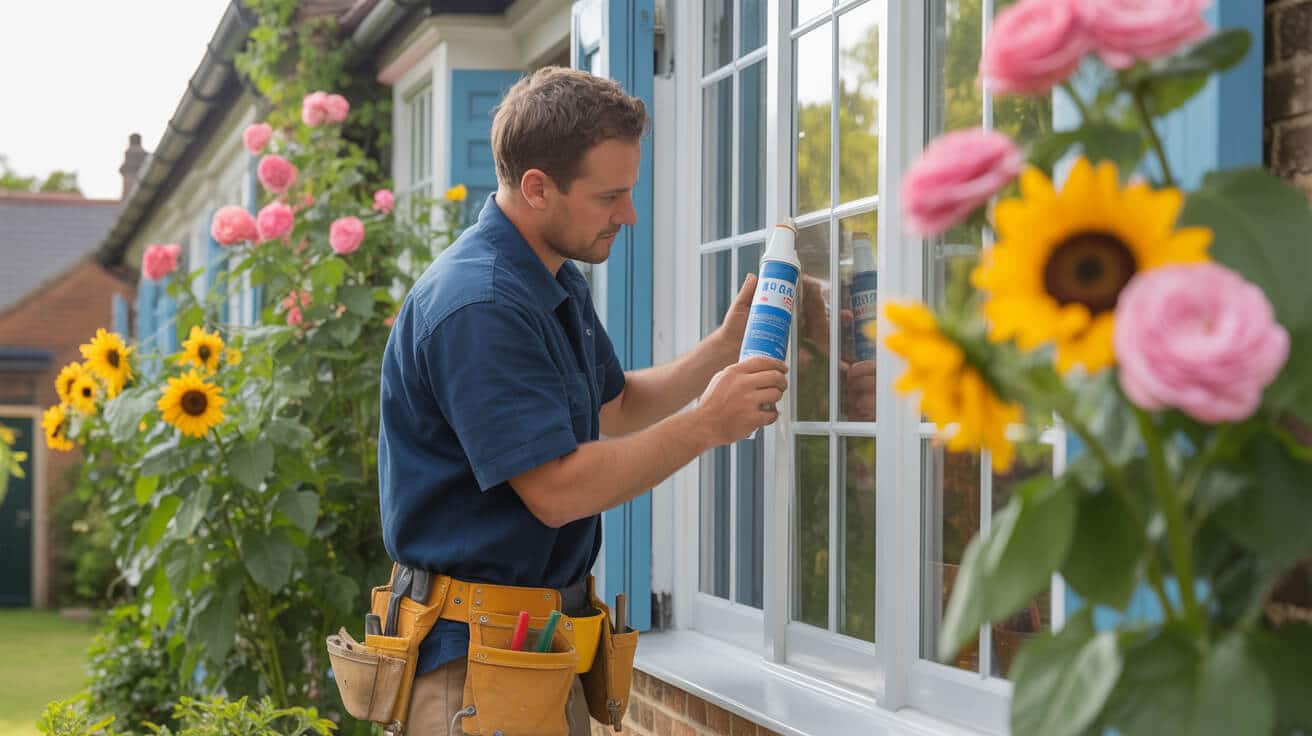
A quick win can turn into an epic fail if you seal the wrong feature, use the wrong product, or dodge compliance. Protect your property, your people, and your professional standing by clearing these checkpoints before you touch a tube of sealant.
Non‑negotiable safety and compliance rules:
- Never seal over trickle vents or fixed grills: These are essential for ventilation, especially in rentals, HMOs, or blocks. Blocking them breaches legal and health requirements.
- Check for rotten frames, flaking paint, or rust: Don’t just seal and forget—repair or replace the structural issue first.
- Suit up with PPE: Scraping old lead-based paint or handling some modern sealants requires gloves and sometimes even goggles.
- Size up your compliance obligations: For landlords, property managers, and contractors, Part L (energy) and Part F (ventilation) of the UK Building Regulations are not optional ([gov.uk](https://www.gov.uk/government/publications/conservation-of-fuel-and-power-approved-document-l)).
Good sealing stops draughts—great sealing leaves you stress-free on audits, EPC checks, and late-night unexpected damp calls.
Hit a patch of doubt—a rotten sill, an unfamiliar vent, or a compliance feature? Pause. Document. Call in a pro. It’s the best insurance against regulator wrath or surprise repair bills.
What’s the Proven Sequence for Sealing Air Leaks Around Windows—Without Do-Overs?
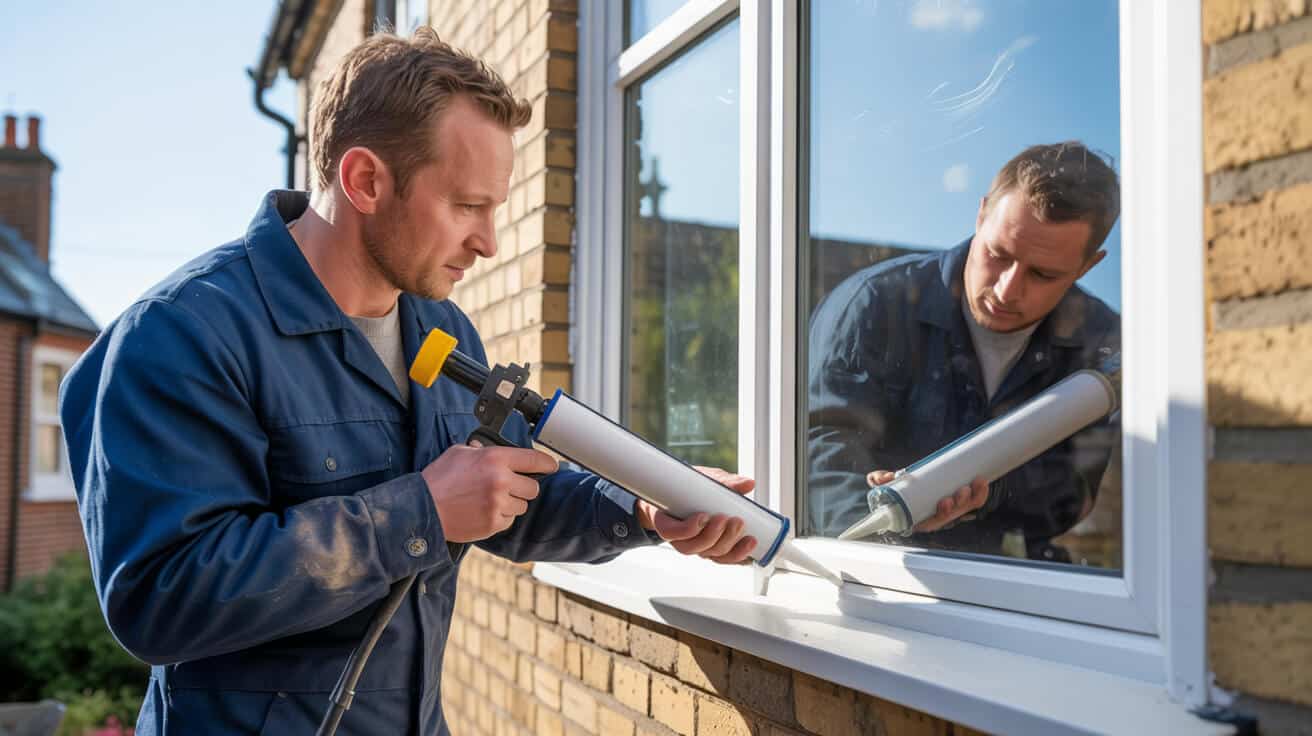
Clean. Consistent. Careful. A rushed repair fails, costs more to redo, and rarely passes compliance checks. Invest a little extra time and you’ve solved not just today’s comfort, but years of audit, tenant, and stakeholder satisfaction.
Step-by-step for zero-fuss, compliant sealing:
- Remove every scrap of old caulk: Don’t just surface-scrape—get down to clean, dry frame for total adhesion.
- Wipe clean: Any dust or oil will wreck the seal—use a microfibre cloth.
- Cut and run a steady bead of new sealant: Squeeze consistently, avoid lumpy over-application. Immediate smoothing (with finger or tool) is key.
- Fit weatherstrip tape where you spot movement or drafted sashes: Measure accurately; too thick and windows jam, too thin they still leak.
- Boost older single-glazed windows: Add specialist draught-excluder film or insulation as a layer on top (thisoldhouse.com).
For each window:
- Indoors—choose paintable caulk that flexes as your window expands or contracts.
- Outdoors—opt for UV-stable and rain-hardy formulas only.
Record your repairs (photos, dates, materials). One neat digital folder can cut hours off next year’s compliance audit or warranty claim.
Strong property managers log every fix—because problems return to the last place you ignored.
Patience pays off three, five, ten times over down the road.
How Do You Confirm Your Window Sealing Actually Worked—and Prove It If Needed?
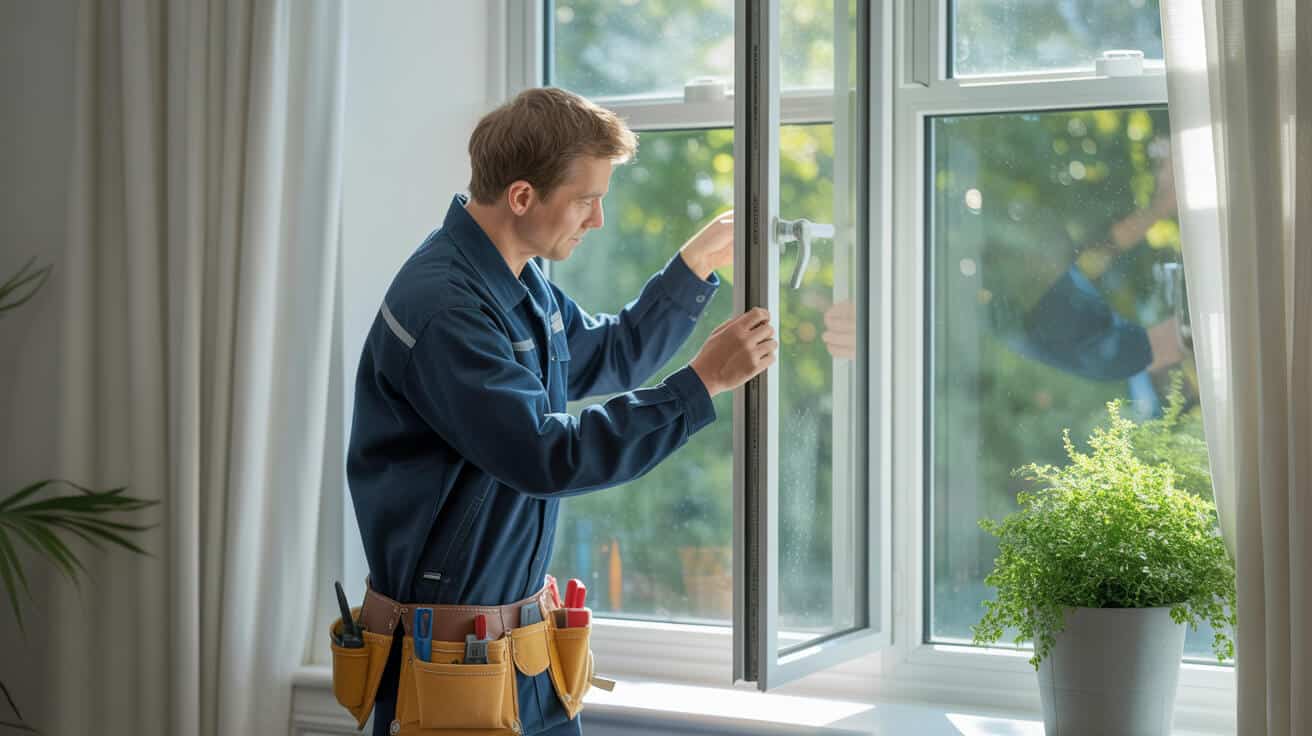
Sealing isn’t “set and forget.” A single missed edge, a tiny bubble, or a peel-off after a frost can undo your hard work and throw your compliance into question.
Proved performance is the difference between a feel-good fix and a certifiable improvement.
Post-repair quality checks, every time:
- Repeat your air, smoke/incense, and paper strip tests: This time, especially after a storm or deep freeze.
- Investigate for new condensation, patches, or chills: They may signal another lurking entry point.
- Maintain a simple log: Which window, when, what materials, and before/after photos.
Keep vents and compliance features clear—don’t fall into the “total seal” trap. Perfect airtightness at the price of zero ventilation is a legal and health headache waiting to erupt.
If issues recur—persistent condensation, warped sashes, or mysterious cold zones—escalate confidently to professional intervention.
When Does Professional Help From All Services 4U Beat DIY Repairs For Window Leaks?
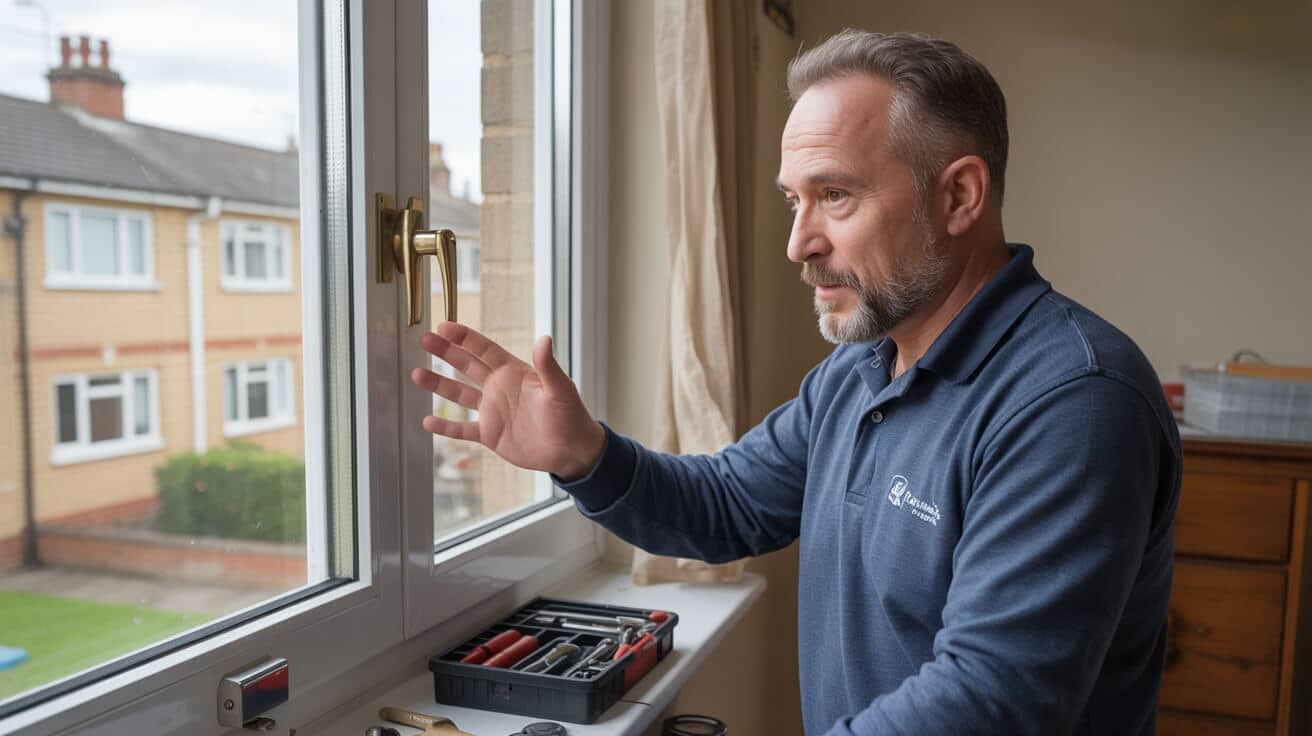
DIY delivers for simple jobs, but when the property, compliance, or a stakeholder relationship is on the line, “good enough” just isn’t. Safety, documented compliance, or scope creep? Professional help pays for itself—and then some.
Call All Services 4U if:
- Draughts return after DIY treatment.
- Frames show rot, major movement, or glazing won’t sit right.
- EPC, compliance, audit, or warranty documentation is needed for rentals, managed properties, or portfolios.
- You want repairs certified, warranty-backed, and properly recorded.
An expert fix means no chasing trades, no late‑night call‑outs, and a property that stands up to audit, not just weather.
All Services 4U supplies:
- City & Guilds, Part P, and Gas Safe credentialed engineers.
- Modern kit, weatherproof sealants, compliant techniques—tailored for both heritage and new builds.
- Transparent, upfront pricing—plus digital job reports for your audit trail.
- Fast response—emergency ready or scheduled maintenance, with a smile.
Your stakeholders sleep better—and so do you—knowing every repair has a name, a date, a standard, and a documented outcome.
Ready For Hassle-Free, Efficient, and Audit-Proof Window Sealing? All Services 4U Delivers.
You don’t need another season of paying extra to heat the street—or answering tenant complaints about cold, rot, or failed EPCs. If your building (or your to-do list) says it’s time for a sealing upgrade, leave the drama behind. All Services 4U delivers peace-of-mind repairs and compliance, carried out by certified professionals who treat your property’s integrity (and your reputation) as their own.
The gap between problem and sorted could be as small as a phone call.
When you want wheels-up service—not empty promises—All Services 4U is your partner in robust property care, insurance-proof documentation, and results that withstand both storm and scrutiny.
Contact All Services 4U today—protect comfort, capital, and compliance with one action.
Frequently Asked Questions
Where do hidden window air leaks most frequently escape notice, and why do they matter for energy, compliance, and tenant satisfaction in today’s properties?
Invisible gaps around windows plague even recently upgraded properties, costing you more than you think. Air leaks mostly emerge where window frames meet masonry, at shifting sash joints, or behind aged weatherstripping—especially in buildings over five years old or exposed to seasonal expansion. These micro-gaps let warm air bleed out and cold creep in, quietly defeating insulation efforts and causing your heating bills to climb. On average, stealth leaks can account for 15–25% of total air exchange losses in a typical residential block (Building Research Establishment, 2023).
What makes this more than just a comfort issue is modern compliance: UK Document L and EPC targets demand ever-tighter air permeability and documented improvement to pass audits. Meanwhile, tenants are getting savvier about what “draught-free” should mean; many are using plug-in temperature-sensing gadgets or non-contact thermometers to challenge lease conditions.
What you don’t feel at first is exactly what costs you every quarter—and what could be flagged in the next compliance audit.
Are specific property types especially vulnerable to hidden leaks?
- Homes with timber frames (shrinkage and swelling).
- Post-renovation properties where old and new materials meet.
- Flats with mixed-use windows (vents, sliding, fixed).
- Commercial blocks retrofitted for energy savings but using legacy sashes.
What’s the silent cascade beyond the energy bill?
Unaddressed leaks heighten condensation risk, breed mould, degrade internal air quality, and can prompt complaints leading to withheld rent or negative online reviews. Landlords lose insulation benefits, risk falling short of upcoming April 2025 MEES for lettings, and often pay twice—first on bills, then on urgent repairs demanded by councils or insurers. When you close those gaps before they spiral, you’re not just boosting comfort but protecting compliance and reputation.
Which advanced detection strategies outperform classic DIY methods for identifying elusive window draughts?
Manual testing—like the hand-feel or candle flame—misses the most expensive leaks. To catch the real culprits, professionals rely on thermal imaging to spotlight heat loss along frames and sills, revealing air movement you can’t see or feel. Infrared cameras or even affordable laser thermometers show drop-off cold spots, critical in tight rental markets or properties with complex window arrays. Ultraviolet dye tests (where harmless dye traces water entry after controlled spraying) reveal failures no amount of caulking will cure—ideal for those “it’s definitely not the sealant” scenarios.
Increasingly, multi-unit landlords employ long-term IoT sensors that monitor temperature and humidity at multiple points, delivering alerts when patterns of slow loss emerge over days or weeks. For listed or conservation buildings where invasive work is a no-go, acoustic leak metres can log sound changes as air whips through tiny faults, mapping risk without disrupting historic value.
When is specialist tech or a professional justified?
- You’ve seen persistent condensation, even after visible cracks are sealed.
- Utilities spike after upgrades, suggesting something’s still wrong.
- Annual compliance checks or portfolio audits demand clear, timestamped proof of repairs.
- High-stakes properties—think schools, hospitals, rental blocks—where leaks can trigger mass complaints or regulatory action.
One thorough scan or targeted test gives you the evidence you need to solve—not just chase—recurring leaks.
Which specific tools, sealants, and records are favoured by industry leaders for audit-ready and future-proof window sealing?
Best-in-class repairs start with BS EN ISO 11600-certified silicone or hybrid sealants—products designed to flex with your window and survive real-world British weather. Avoid generic acrylic fillers that crumble within one season or react badly to paint. Compression and EPDM weatherstrips remain the gold standard for commercial and high-traffic windows, boosting both energy ratings and durability. When a property is listed, choose magnetic or shrink-seal systems that can be removed without harming the original structure.
Proper record-keeping has become as important as the product: maintain a digital register of every sealant batch, installer, and installation location, with before-and-after photos and heat-map data from any thermal or sensor assessments. For multi-property landlords, secure cloud storage means your compliance storey survives staff turnover, audits, or even a lost laptop.
What details should be logged?
- Material codes and manufacturer data for every seal.
- Installer’s certification or technician number if professional.
- Timestamped images and measurement data (temperature, humidity).
- Digital sign-off from responsible agent or property owner.
A single missing batch code or ‘after’ photo can delay an EPC sign-off or even risk insurance cancellation if there’s later water damage.
Which regulatory and compliance shifts in 2024 must UK landlords and property managers prioritise for window air sealing and draught repairs?
The regulatory bar for airtightness has been raised, not just for new builds but also for every significant repair or audit. After the 2022 update to the Homes (Fitness for Human Habitation) Act, rental properties must prove zero “unreasonable draught risk” at handover—meaning paper-only fixes, or “presumed sound” repairs, no longer pass muster. Commercial and multi-tenant buildings are subject to BS 8213-4 periodic check documentation, and facilities managers face stiffer site assessment during annual HSE audits.
Blocking or ignoring background ventilators is now an explicit fail; Document F and current enforcement say “ventilate first, insulate second.” Modern compliance means you need proof of every repair—what you used, where, when, and why natural ventilation (if present) wasn’t impaired. For anyone with older, pre-2000 window systems, councils are starting targeted spot-checks in conservation and low-income areas to enforce energy and air-quality standards.
What proof is now expected?
- Minimum air permeability verified by logbook, not just invoice.
- Digital before/after validation of draught treatment for each risk window.
- Annual declaration that all ventilators remain unblocked and functional.
- Fast, on-demand evidence for insurance or tenant disputes.
Cutting corners now invites penalties of up to £30,000 or the risk of a non-lettable property if you can’t verify work for a new tenant or after an HSE event.
What step-by-step process ensures window sealing repairs deliver both technical performance and ironclad compliance documentation?
Start by preparing the area: restrict access and (in blocks) inform tenants or property managers. Strip out all worn or suspect sealant using industry-standard tools—don’t rely on “paint-over” fixes. Clean all frame recesses and surrounding masonry, then test for damp; if timber or frame moisture exceeds 16%, delay repair or apply a moisture barrier before sealing. Apply the new, code-compliant sealant in a continuous bead, smoothing efficiently to fill all voids but not hinder window function.
Next, fit the required grade of weatherstripping—compression for heavy use, adhesive strip for light. Throughout, document everything: snap high-res before, during, after photos, geotag or QR-link each record to location, and upload data to your preferred asset management system. After curing, verify continued operation—windows must still open fully per H&S and Fire Code rules.
What documentation further insulates you from disputes?
- Timestamp every image and product log for audit evidence.
- Track who did what, especially if staff or contract technicians were involved.
- Match all actions against planned maintenance schedules for fast recall during compliance checks.
What gets documented gets defended—your metre-by-metre record is your best insurance against regulatory or client friction.
When is a professional window sealing and compliance expert needed, and what sets All Services 4U apart for critical cases?
If you’re facing leaks that linger after DIY intervention, or problems that spread beyond a single window, you likely have an underlying building envelope issue, frame movement, or even substrate decay—none of which are solved by basic sealant or foam. All Services 4U brings city-and-guilds-certified expertise, cross-trade skills, and trade-only tools to diagnose, map, and remedy leaks at their root, not just the symptom. We don’t just solve the visible problem—we help you build a defensible compliance portfolio, ready for any inspection, renewal, or asset sale.
Landlords, block managers, or commercial operators should always escalate if:
- Leaks return after repair or impact multiple floors or flats.
- You need coded compliance or have an upcoming HMO, EPC, or insurance audit.
- The property is listed, in a conservation area, or involves shared-ownership schemes (added paperwork and proof required).
- You want to maximise asset value and rental comfort, not just stop a draught.
Choosing All Services 4U ensures you get:
- Registered, fully-insured technicians—no corners cut, no shortcuts.
- Full documentation support—QR-linked photos, digital certificates, and audit-ready logs.
- Real-time updates—see work in progress, track materials, and download proof on demand.
- Eco- and regulation-compliant material choices tailored to each property type.
Call today to book a window audit or discuss a managed portfolio approach. When you need work that stands up to scrutiny—and protects your investment for years to come—let certified experts seal the deal, not just the gap.



